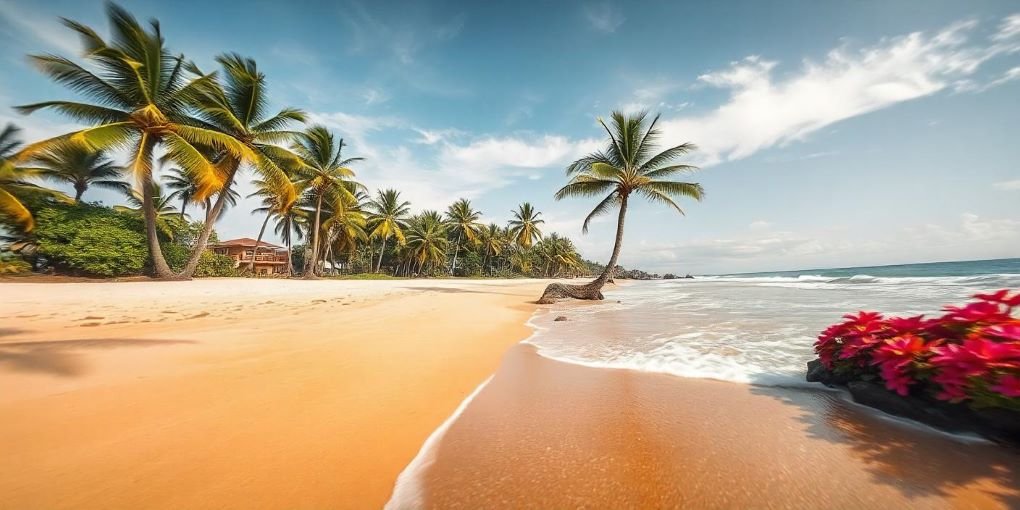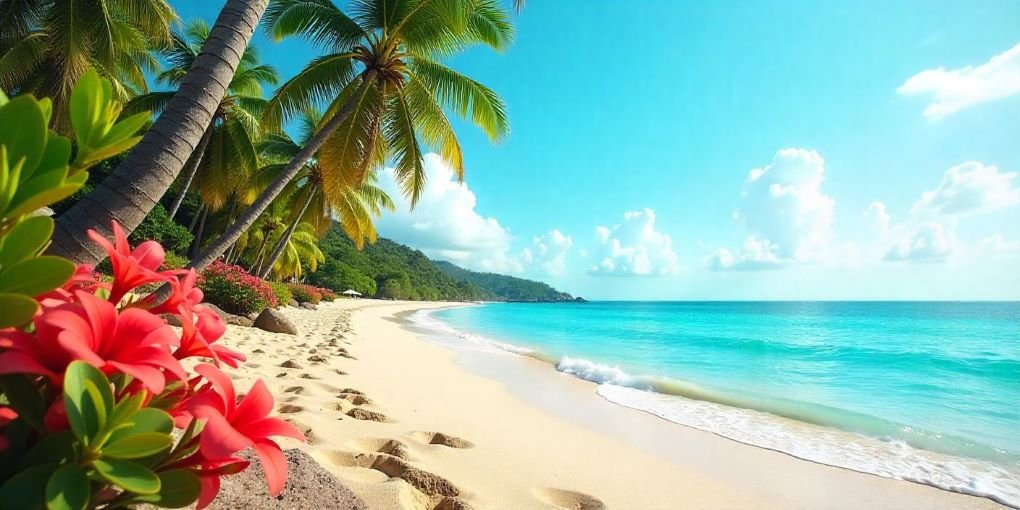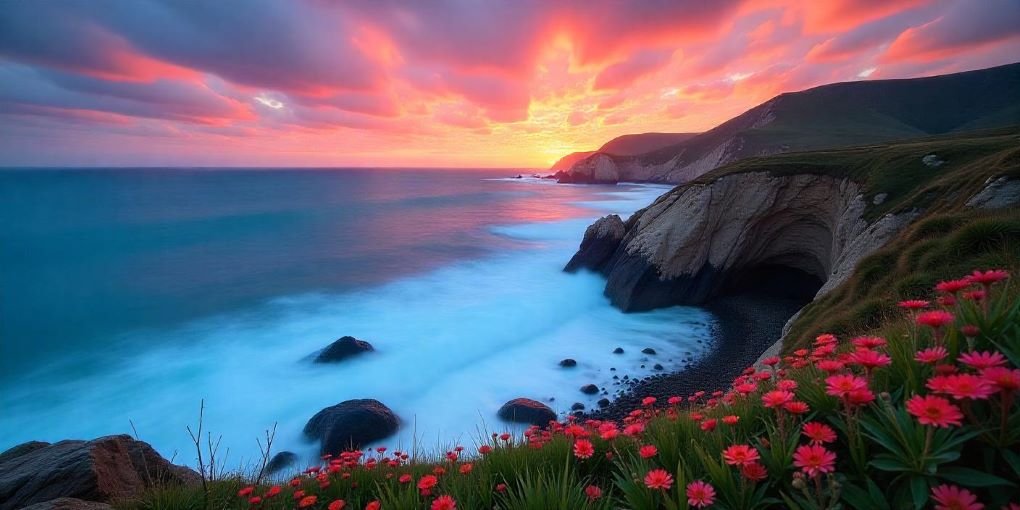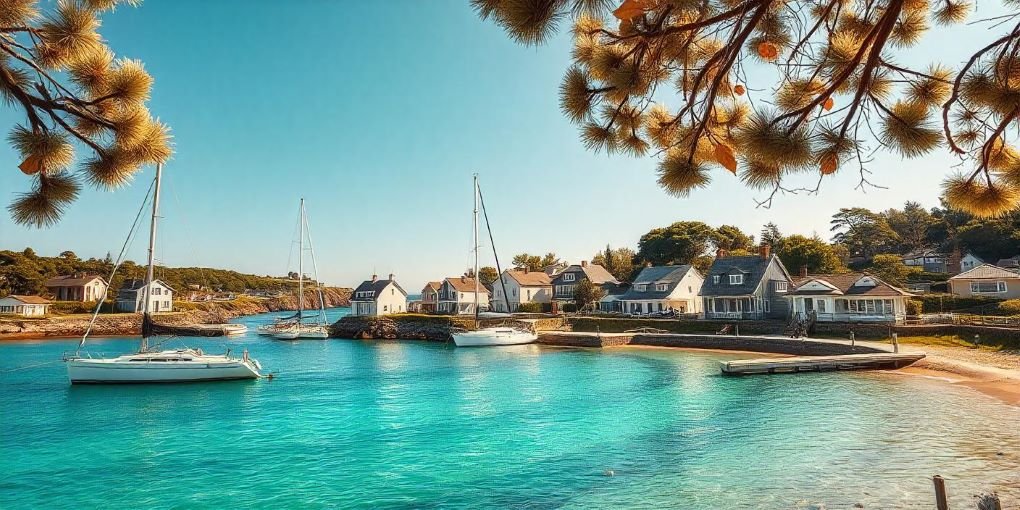Coastal Landscape Design Ideas is an art that intertwines natural beauty with functional aesthetics, perfectly encapsulating the essence of seaside living. Whether you are planning a full-scale garden renovation or seeking to refresh your coastal retreat, this comprehensive guide will inspire you with creative ideas, tips, and strategies for designing a stunning coastal landscape that reflects your personal style while harmonizing with the unique environment.
Understanding the Coastal Environment
Unique Characteristics of Coastal Areas
Coastal landscapes are defined by their proximity to the ocean, which influences the local climate, soil composition, and biodiversity. These elements are essential in influencing the layout of coastal gardens:
- Salt Spray: Coastal areas often experience salty winds, which can impact plant selection and durability.
- Wind Exposure: High winds can affect plant growth and require strategic placement and selection.
- Soil Quality: Coastal soils can vary widely, from sandy to rocky, influencing drainage and nutrient availability.
Climate Considerations
The coastal climate generally features mild temperatures and higher humidity levels. However, it can also present challenges, such as occasional storms and flooding. Understanding these aspects is vital for choosing suitable plants and designing resilient landscapes.
- Hardiness Zones: Research your specific hardiness zone to ensure plant selections thrive in your climate.
- Microclimates: Take note of microclimates in your landscape, as areas near the water might be cooler and more humid than inland spots.
Selecting Coastal-Friendly Plants
Native Plants for Coastal Gardens
Selecting indigenous plants is among the most effective approaches for designing coastal landscapes. Native species are adapted to local conditions Consider the following:
- Beach Grass (Ammophila breviligulata): Perfect for preventing erosion, this grass establishes strong root systems.
- Sea Oats (Uniola paniculata): Recognized for their decorative value, sea oats contribute to the stabilization of sandy soils. require less maintenance, and provide essential habitats for local wildlife.
- Coastal Sage (Salvia spp.): A fragrant herb that thrives in dry, sandy conditions, attracting pollinators.
- Coral Honeysuckle (Lonicera sempervirens): A flowering vine that adds beauty and attracts hummingbirds.
Drought-Resistant Varieties
With changing weather patterns, incorporating drought-resistant plants is a wise choice. These plants thrive in sandy soils and require minimal irrigation:
- Succulents: Varieties like Agave and Sedum add texture and interest while conserving water.
- Lavender (Lavandula): A fragrant addition that thrives in coastal conditions and repels pests.
- Yucca: This striking plant adds architectural interest and thrives in harsh environments.
Designing Functional Spaces
Outdoor Living Areas
Creating functional outdoor spaces enhances the enjoyment of your coastal garden. Consider these elements for designing inviting areas:
- Patios and Decks: Use materials like natural wood or composite decking that withstand moisture and salt.
- Shade Structures: Pergolas or canopies provide relief from the sun, allowing for comfortable seating areas.
Gathering Spaces
Encourage social interaction by designing spaces for gathering:
- Fire Pits: A focal point for evenings by the beach, consider using stone or metal for durability.
- Dining Areas: Incorporate an outdoor kitchen or dining set for al fresco meals with ocean views.
Hardscape Elements
Pathways and Walkways
Choosing the right materials for pathways is essential in coastal areas. Here are some ideas:
- Natural Stone: Durable and aesthetically pleasing, natural stone blends well with coastal surroundings.
- Gravel: A permeable option that allows water to drain while creating a rustic look.
Retaining Walls and Edging
Incorporating retaining walls can help manage soil erosion and create terraced planting areas. Use materials like:
- Boulders: For a natural, rugged look that complements coastal landscapes.
- Wood: Treated timber can be an attractive option for low walls and garden edging.
Water Features
Ponds and Streams
Water features can create a tranquil atmosphere and attract wildlife:
- Natural Ponds: Design a pond that mimics natural bodies of water, incorporating native plants and fish.
- Streams: Create a meandering stream that enhances the garden’s aesthetics and provides soothing sounds.
Fountains and Waterfalls
Fountains and waterfalls can serve as focal points and provide ambient sounds:
- Wall Fountains: Ideal for smaller spaces, these can be designed to mimic coastal rocks.
- Natural Waterfalls: Create a waterfall that cascades into a pond, adding movement and interest.
Creating Biodiversity
Pollinator Gardens
Designing gardens that attract pollinators is essential for maintaining local ecosystems:
- Butterfly Bush (Buddleja): Attracts butterflies with its fragrant blooms.
- Bee Balm (Monarda): A favorite among bees, it adds vibrant colors to your garden.
Habitat Creation
Incorporate habitats for wildlife by providing shelters and food sources:
- Birdhouses and Feeders: Enhance your garden’s biodiversity by attracting various bird species.
- Insect Hotels: Create spaces for beneficial insects, promoting a healthy garden ecosystem.
Sustainability Practices
Water Conservation
Implementing water-efficient practices can greatly benefit your coastal landscape:
- Rain Gardens: Design rain gardens to capture and absorb stormwater runoff.
- Drip Irrigation: This method minimizes water waste and ensures efficient watering.
Composting and Soil Health
Promoting soil health is essential for a thriving garden:
- Composting: Construct a compost container to repurpose organic materials, enriching the soil naturally.
- Mulching: Employ organic mulch to maintain moisture levels and inhibit weed growth.
Seasonal Considerations
Year-Round Interest
To uphold aesthetic charm all year round, think about plants with varying bloom times and textures:
- Spring: Plant early bloomers like Daffodils and Tulips.
- Summer: Incorporate vibrant flowers like Zinnias and Rudbeckia.
- Autumn: Choose plants with fall foliage, such as Japanese Maples.
Seasonal Maintenance Tasks
- Spring: Prune dead or damaged branches, and refresh mulch.
- Summer: Regularly water and deadhead flowers to encourage more blooms.
- Fall: Prepare plants for winter by cutting back perennials and protecting sensitive species.
Color Schemes and Themes
Coastal Color Palette
Choosing a cohesive color scheme that reflects coastal themes can enhance your landscape’s appeal:
- Soft Blues and Greens: Mimic the colors of the ocean and sky for a calming effect.
- Warm Sand and Earthy Tones: Incorporate browns and tans to reflect the beach environment.
Thematic Design Elements
Consider creating a theme for your coastal garden:
- Tropical Oasis: Use vibrant flowers and palm trees for a lush, exotic feel.
- Rustic Coastal: Incorporate driftwood, shells, and natural stones to create a beachy, laid-back vibe.
Outdoor Decor and Accessories
Furniture Choices
Choosing the appropriate outdoor furniture is essential for comfort and style:
- Weather-Resistant Materials: Opt for teak, aluminum, or synthetic wicker to withstand coastal conditions.
- Comfortable Seating: Incorporate cushions and pillows in marine fabrics to add comfort and color.
Accessories and Lighting
Enhancing your coastal landscape with decor and lighting can create a magical atmosphere:
- Solar-Powered Lights: Illuminate pathways and garden areas while being energy-efficient.
- Decorative Accents: Use nautical-themed decorations, such as lanterns and seashells, to add charm.
Landscaping for Privacy
Natural Barriers
Create privacy in your coastal garden by using natural elements:
- Hedges and Screens: Use dense shrubs like Boxwood or Privet for privacy screens.
- Tree Canopies: Strategically plant trees to provide shade and privacy.
Fencing Options
Choose fencing that complements your coastal theme:
- Wooden Fences: Natural wood can blend seamlessly with your landscape while providing privacy.
- Trellis Panels: Use trellises adorned with climbing plants to create a beautiful and functional barrier.
Incorporating Technology
Smart Irrigation Systems
Investing in smart irrigation technology can help manage watering efficiently:
- Automated Timers: Set watering schedules based on weather conditions.
- Moisture Sensors: These can help prevent overwatering and conserve water.
Garden Apps
Utilizing gardening apps can aid in plant care and landscape management:
- Plant Identification: Use apps to identify native plants and pests.
- Gardening Calendars: Keep track of planting and maintenance schedules.
Professional Help vs. DIY

When to Hire a Landscape Designer
Consider hiring a professional when:
- Your project involves extensive hardscaping or complex designs.
- You desire a comprehensive planting plan tailored to your site’s conditions.
Advanced Planting Techniques for Coastal Gardens
Layered Planting for Depth and Interest
Layered planting involves arranging plants in a tiered structure to create depth and visual complexity. This method can be particularly effective in coastal gardens where the natural backdrop of the sea or lake adds to the design.
- Tall Grasses and Shrubs: Plant taller elements like Pampas Grass or Miscanthus at the back to form a natural screen and break the wind.
- Mid-Height Flowers: Use flowers like Daisies, Echinacea, and Black-eyed Susans in the midsection to add bursts of color and attract pollinators.
- Low-Growing Ground Covers: Select coastal-friendly ground covers such as Creeping Thyme or Ice Plant for the front layer to stabilize soil and prevent erosion.
Companion Planting for Sustainability
Companion planting involves placing specific plants together that can support each other’s growth and deter pests:
- Herbs and Flowers: Plant Rosemary and Marigolds near vegetables or other flowers to repel certain insects.
- Nitrogen Fixers: Use plants like Lupines that help enhance the soil with nitrogen, which aids nearby plants that need nutrient-rich soil.
- Wildflowers: Incorporate native wildflowers that are adapted to coastal climates and require minimal maintenance.
Designing with Coastal Wildlife in Mind
Encouraging Birds and Butterflies
To make your garden a sanctuary for birds and butterflies, consider these strategies:
- Bird-Friendly Shrubs: Plant Bayberry and Serviceberry, which provide berries and shelter.
- Nectar-Rich Flowers: Include Milkweed and Butterfly Bush for butterfly attraction.
- Bird Baths and Feeders: Set up bird baths for fresh water and feeders filled with seeds specific to the types of birds in your region.
Creating Safe Havens for Small Animals
Small animals like hedgehogs and toads play a vital role in pest control and maintaining balance:
- Log Piles: Stack logs in shaded areas to create a habitat for small creatures.
- Rock Piles: Assemble rocks near water features to give amphibians a place to rest and cool off.
- Plant Dens: Use thick shrubs and perennials like Hostas to provide safe hiding spots.
Enhancing the Coastal Aesthetic
Incorporating Driftwood and Natural Elements
Driftwood and other natural beach finds can enhance the rustic appeal of your garden:
- Driftwood Sculptures: Use large driftwood pieces as standalone art or integrated into flower beds.
- Shell Borders: Line pathways or garden beds with shells for a coastal vibe.
- Stone Arrangements: Position smooth beach stones around water features or as a decorative border.
Painting with Plants
Choose plant varieties with foliage that mirrors the ocean’s hues to create a seamless visual experience:
- Silver Foliage: Dusty Miller and Lamb’s Ear have a silver tone that reflects the light, giving an ethereal look.
- Blue-Green Plants: Blue Fescue and Eucalyptus add a hint of color that blends with sea and sky.
- Vibrant Pops: For bold statements, plant Crocosmia or Red Hot Poker, which contrast beautifully with neutral sand tones.
Practical Tips for Managing Coastal Challenges
Windbreak Solutions
High winds are common in coastal areas and can damage fragile plants. Here’s how to manage them:
- Living Windbreaks: Use tall shrubs or trees like Sea Buckthorn and Tamarisk to act as a natural wind barrier.
- Staggered Planting: Plant wind-tolerant species in a staggered manner to slow down wind and protect more delicate plants behind them.
- Fencing Options: Permeable fences that allow some airflow, such as lattice or slatted designs, reduce the force of the wind without creating turbulence.
Erosion Control Measures
Soil erosion is a concern in coastal landscapes due to the sandy, loose soil:
- Native Grasses: Plant native grasses with deep roots, such as Beach Grass and Switchgrass, to hold the soil in place.
- Retaining Walls: Build retaining walls from natural stone or treated wood to create terraced areas that reduce runoff.
- Ground Covers: Cover exposed soil with plants like Creeping Juniper or Beach Strawberry to provide a natural shield against erosion.
Lighting for Coastal Landscapes
Ambient and Functional Lighting
Well-planned lighting has the potential to turn your garden into an enchanting area once the sun goes down:
- Pathway Lighting: Use solar-powered stakes or LED lights along walkways for safety and ambiance.
- Uplighting: Place uplights under tall grasses, shrubs, or trees to cast dramatic shadows and highlight the garden’s natural structure.
- Water Feature Illumination: Waterproof LED lights can be placed in fountains or ponds to create shimmering reflections.
Energy-Efficient Options
Opt for energy-efficient and eco-friendly lighting solutions:
- Solar Lights: Harnessing the sun’s power, solar lights charge during the day and illuminate at night without increasing your energy bill.
- Low-Voltage Systems: These systems use minimal electricity while providing ample brightness.
- Motion Sensors: Integrate motion-activated lights to conserve energy and provide security.
Integrating Coastal Art and Sculptures

Nautical-Themed Art
Bring the coastal theme to life with decorative art:
- Anchor Sculptures: Place metal or wooden anchors as statement pieces in open areas.
- Seashell Arrangements: Create artistic displays using shells collected from the shore.
- Mosaics: Design mosaics with oceanic themes using broken tiles or stones.
Functional Sculptures
Incorporate sculptures that serve both as decoration and utility:
- Sundials: Classic sundials provide a touch of antiquity and are functional as timekeepers.
- Benches with Art Details: Choose benches made from driftwood or those with carved fish and wave patterns.
Coastal Edible Gardens
Growing Edibles by the Sea
Cultivating an edible garden is possible even in coastal climates:
- Herbs: Plant Rosemary, Thyme, and Oregano, which thrive in sandy soil and salty air.
- Vegetables: Choose hardy vegetables like Kale, Chard, and Spinach, which are more tolerant of saline conditions.
- Fruit Trees: Dwarf citrus trees, such as Lemon and Lime, can add fragrance and produce fresh fruit for your kitchen.
Raised Beds and Container Gardens
Consider these methods for growing edibles:
- Raised Beds: Elevated beds improve drainage and allow you to control the soil composition.
- Container Gardens: Utilize pots and containers for cultivating vegetables and herbs. Containers can be moved indoors during harsh weather, protecting your plants from damage.
Personalizing Your Coastal Landscape
Customized Signage
Create a welcoming entrance or highlight areas of your garden with custom signs:
- Driftwood Signs: Paint or carve messages like “Welcome to Our Oasis” or “Beachside Retreat.”
- Stone Markers: Use painted stones to label plants or indicate pathways.
DIY Coastal Projects
Add personal touches with do-it-yourself projects:
- Shell Wind Chimes: Collect shells and string them together for a musical addition that sways in the breeze.
- Beach Pebble Art: Use pebbles to create designs on stepping stones or wall art.
Maintaining Your Coastal Landscape Year-Round

Seasonal Upkeep
Each season brings different maintenance tasks:
- Spring: Check for winter damage, fertilize, and start planting new additions.
- Summer: Focus on watering efficiently and controlling pests.
- Autumn: Prune perennials and clear fallen leaves to prevent mold.
- Winter: Protect tender plants with covers or move containers indoors.
Long-Term Care
For ongoing success, plan for sustainable growth:
- Soil Amendments: Replenish soil nutrients annually with compost or natural fertilizers.
- Pest Management: Encourage beneficial insects like ladybugs to manage pest populations naturally.
FAQs on Coastal Landscape Design Ideas
What plants are best suited for a coastal landscape garden?
Plants that tolerate high winds, saline conditions, and sandy soils are ideal. Some popular options include Sea Lavender, Beach Grass, Rosemary, Lavender, and Bayberry. Native plants are often best, as they’re naturally adapted to the coastal environment.
How can I prevent soil erosion in a coastal garden?
To manage erosion, consider planting native grasses with deep root systems, such as Switchgrass or Beach Grass. Ground covers, retaining walls, and terracing can also help reduce runoff and keep soil in place.
What are some low-maintenance design tips for coastal landscapes?
Choose hardy plants that thrive in the local conditions and require little watering, such as succulents and drought-resistant perennials. Use mulching to help retain moisture, and consider adding elements like gravel paths or beach stones, which are attractive and low-maintenance.
How can I incorporate water features in a coastal garden?
Elements of water, including ponds or fountains can add tranquility and attract wildlife. Make sure to use salt-resistant materials and position them in sheltered areas to protect them from high winds. Solar-powered pumps are a good choice for energy efficiency.
What are good ways to create a windbreak in a coastal garden?
Natural windbreaks, such as a row of salt-tolerant shrubs or trees like Sea Buckthorn or Wax Myrtle, work well. You can also use a permeable fence, like a lattice or slatted fence, which reduces wind speed without creating turbulence.
How can I make my coastal landscape eco-friendly?
Native plants, which need less water and maintenance, are an excellent choice. Consider installing solar lighting, using rainwater collection, and choosing organic fertilizers to reduce your environmental impact.
Can I have a vegetable garden in a coastal landscape?
Yes, you can grow edibles even in coastal climates! Hardy vegetables like kale, chard, and herbs like rosemary and thyme do well in these conditions. Raised beds are helpful to improve drainage and control soil quality.
What types of lighting work well in a coastal garden?
Solar-powered lights are ideal for energy efficiency. Choose fixtures designed for outdoor use in coastal areas, such as those made from stainless steel or plastic, to prevent rusting from salty air.
Are there specific materials I should avoid in coastal landscapes?
Avoid metal elements prone to rusting and untreated wood, which can degrade quickly in salty air. Opt for durable materials like treated wood, stone, driftwood, or weather-resistant synthetic materials.
How can I attract wildlife to my coastal garden?
Planting nectar-rich flowers, providing fresh water sources, and adding shelter like birdhouses or rock piles can attract birds, butterflies, and small animals.
